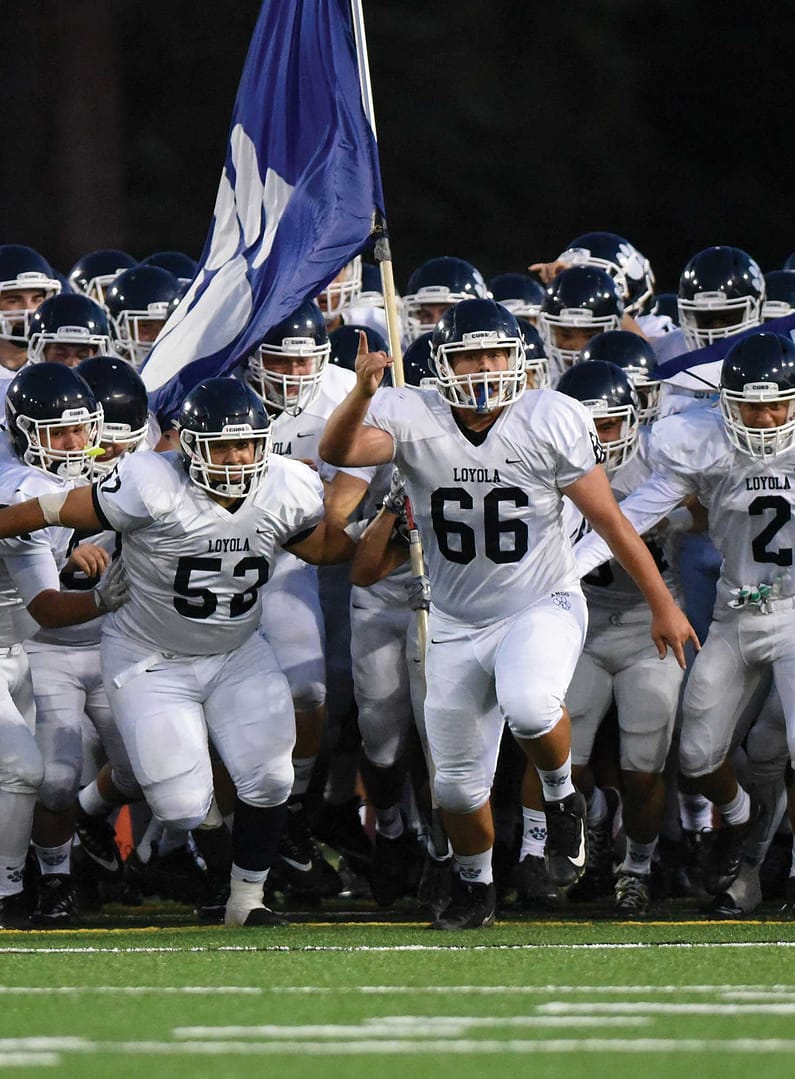With mind racing, palms sweating, and stomach tied in a tight knot, the fantasy player waits for his or her draft to begin. Anyone who has ever participated in fantasy football claims pre-draft jitters are common.
All summer long, fantasy players have been planning every scenario and anticipating their opponents’ next move in the chess match that is fantasy football. However, unlike chess, fantasy owners compete against anywhere from 11 to 1 million other opponents for bragging rights and the title of champion for 2016.
Since its inception in 1962, fantasy football has brought a new perspective to football fans around the world, gaining international recognition as a competitive, invigorating activity to do with friends and family. Some people create private leagues and some people enter public leagues where they can set a new lineup each week.
According to the Fantasy Sports Trade Association (FSTA), in 2013, approximately 25.8 million people in the US alone played in a fantasy football league, 40 percent of them saying that they plan on playing it for the rest of their lives. No matter the league, every fantasy owner simply shares one common trait: a passion for the game of football.
A group of friends from Nebraska has taken their love of fantasy football to the extreme in what has been deemed the “Tattoo League.” These men put their skin on the line, with the last place finisher getting tattooed with a design chosen by the winners at the end of the season.
Each league is unique in its own respect. Some leagues choose to do live drafts where the picks are written down on a whiteboard or piece of paper with no shortage of yelling in between selections. Other leagues choose to do their drafts online, a more peaceful method where the players post their comments in the chat section if they want to speak. A few leagues have made the draft even more riveting by having it take place at a restaurant or sports bar with a TV that displays the draft picks to everyone present.
The NFL Preseason can be telling of which players will have a breakout year and which players will have a down year. Managing a fantasy football team is very similar to managing the stock market in that both constantly oscillate without warning, sending people into a flurry of celebration, confusion, or utter despair.
Unfortunately, injuries plague even the NFL’s top players and can not only ruin a fantasy team’s playoff chances, but an NFL team’s as well. Just recently, Jordy Nelson, a wide receiver for the Green Bay Packers, and Kelvin Benjamin, a wide receiver for the Carolina Panthers, were both ruled out for the season after tearing their ACLs in the preseason.
Many eager fantasy owners, who couldn’t wait to start their drafts, made their picks before the two players were injured. Nelson and Benjamin are two highly ranked wide receivers, and many fantasy owners were depending on them to lead their respective teams in the upcoming 2015-16 season.
Freshman Nicky Solomon discussed his fantasy football strategy as he said, “I always go online to ESPN.com and other websites to look up stats and draft strategies, so I will have an idea of which players will score the most fantasy points this year to help me win. Unlike some of my friends, I try to pick my favorite players because they are good players who are exciting to watch.”
Despite ever-changing strategies and beliefs, there has been one constant in fantasy football recently; Matthew Berry. Anyone who has played fantasy football knows about Matthew Berry, whether they choose to utilize his knowledge or not. Designated as the ESPN Fantasy Guru, his knowledge of the draft and his weekly player recommendations are unparalleled.
While the average age of a fantasy football player is 34, according to the FSTA, the gravitational pull of fantasy football grabs more people daily. Many have said, especially in recent years, that the “Fantasy Fever” has caught hold of the Loyola students and faculty, and the temperature is only rising.
Elaborating on his pre-draft strategy, Magis moderator Mr. Barnhill said, “A couple days before the draft I will look at the Yahoo suggestions and watch the fantasy football segments on ESPN to get an idea of who I will pick. In the past, if I felt like I drafted a good team and got the players that I wanted, then I would check my team roster three to four times a week, and if I didn’t have a good draft, I would check it once or twice a week.”
Senior Riley Livingston takes a different approach to his pre-draft strategy. He said, “I pretty much base my pre-draft strategy on what the players have shown in recent years as a way to predict how they will do in this coming year. I don’t really use any expert opinions or draft suggestions on ESPN. I tend to pick players who are athletes that will help me win rather than players from my favorite NFL teams.“
With this year’s season starting on Sept. 13, fantasy team owners are analyzing last year’s stats, intently watching preseason football, and above all, hoping to have a good draft. With the constant risk of players getting injured or traded, no team is safe and no owner should feel comfortable. As the seconds tick down to the start of what promises to be an exhilarating NFL season, each Loyola student and faculty member that plays fantasy football has a unique strategy they employ to get that coveted “Dream Team” come draft day.






Comments are closed.